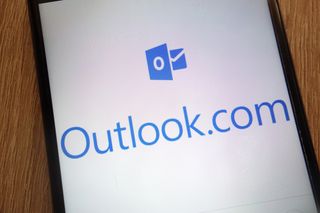Is Microsoft’s Outlook Premium fit for (small) business?
Despite many loyal years with Hotmail, and thus Outlook, a parting of the ways is imminent

The Hotmail webmail service is celebrating its 21st birthday this year, and its 20th in the hands of Microsoft. Microsoft, at a point when its online foresight was still faltering a little, paid around $400 million for the service, and – contrary to original fears – kept it as a free service. It has done so ever since.
However, against a backdrop of suggestions that the Hotmail domain in an email address gives a less than stellar impression, Microsoft phased down (but not out) the moniker and migrated it to Outlook.com back in 2013 (as part of its broader Outlook and subsequent cloud strategy). Hotmail addresses are still active, and Microsoft will still allow new registrants to choose one. It's tried to offer the best of both worlds.
What it hasn't done so convincingly, though, is offer a more professionally robust service that could prove of use to small business and the self-employed. Not for the want of trying, though.
For a long time, Microsoft would offer to relieve you of a small annual fee – around £15 – in exchange for a Hotmail Plus account. As you'd expect, this is a step up from the basic package. For those who relied on their email for the transferring of small to medium-sized files, this was useful. Notwithstanding the fact that a subscription also stripped advertising away, it was the increased storage and acceptance of bigger email file attachments that was the real bonus. Further features included auto-forwarding and the removal of the threat that your account would be deleted if it remained dormant (something that used to be more of a possibility than it would ever be now).
Many signed up. I was one of them.
A bit of background: I was using Hotmail to send around low-resolution proofs of layouts and magazine covers, generally at 5-6MB a time. It was easy enough to do from my happily primitive smartphone with just a button press or two. Furthermore, for me, not every client was using cloud services and there's only so much WeTransfer faffing you can do from a smartphone.
But there came a point where Microsoft's servers didn't like the exchange of sizeable emails so much and I got a warning message that my mailbox would soon be full. Fine. No problem with that. I went looking to see what the capacity of my mailbox was, and how close I was to it. Which is when things went wrong.
Cloud Pro Newsletter
Stay up to date with the latest news and analysis from the world of cloud computing with our twice-weekly newsletter
Unlike Gmail, Hotmail won't give you either number. On its web client, it consistently refused to even sort mails by size, protesting that I had too many.
5GB is believed to be the current standard limit for an Outlook/Hotmail webmail account, with 10GB for the premium, paid-for version. But it's not that simple: Microsoft's algorithms grow your account automatically in line with your needs. In principle, this is a terrific feature. Your account grows with you and you never hit the walls of it.
Only you do. A warning email comes out, declaring that "Your Outlook.com account is growing too fast".
It's a helpful email, that explains "Outlook.com storage is designed to grow at a rate that serves the needs of the vast majority of our customers. Once in a while, a customer's storage needs grow faster than expected. We've provisioned additional storage for your account, but you might want to delete some of your old mail".
A collection of tips follow. But what doesn't is a clear warning as to what happens next: that your account will be rendered full if you don't clear enough of your mail out, and clear it out quickly. You're not told the target amount, you're not given a note when you've removed enough. You're not told whether your mailbox is full, or if it now has enough room. Instead, mails to your account bounce without your direct knowledge, with the sender being told that your mailbox is full. For the owner of any small business, that single sentence is likely to be a deal breaker.
In contrast, Gmail – the most obvious competitor – doesn't offer the automatic expansion of your account, heavily warning you when you're about to hit hard limits. But it certainly lets you know where you stand. Even if you're paying the $19.99 that the current guise of Hotmail's paid service – Outlook Premium – offers, you don't get that base information.
Microsoft would (correctly) argue that it has long encouraged its Hotmail/Outlook users to upload files to its OneDrive cloud storage. It offers 5GB of space for free (down from 15GB in 2015, although existing users could opt-in to keep the extra storage space if needed). But when you're moving around a lot, and just need to whack some buttons and go? It's not as seamless as it should be.
The hope would be that Outlook Premium could be a useful half-way house between the free service (which is far less spam-infested than often reported; Microsoft has made substantive progress there over the past few years) and the full on Office 365 Commercial (business plans start at £7.90 per user per month). But there's nonetheless a sense that in chasing features, Microsoft has missed off one of the basics. That in trying to do the right thing – having an account that exponentially grows with your needs – it's overlooked something fundamental.
Me and my Outlook Premium account are, after a long and bumpy marriage, parting ways later this month. A pity, too. But as a self-employed sole trader, it – sadly – comes with too big a risk attached.




